Chapter: Biotechnology Applying the Genetic Revolution: Viral and Prion Infections
Influenza Is a Negative-Strand RNA Virus
INFLUENZA
IS A NEGATIVE-STRAND RNA VIRUS
Influenza virus , an orthomyxovirus , is
an example of a negative-strand single-stranded RNA virus. In other words, the
virus genome is present in the virus particle as noncoding (= antisense =
negative-strand) RNA. The flu virus particle contains a segmented genome
consisting of eight separate pieces of single-stranded RNA ranging from 890 to
2341 nucleotides long. These are each packed into an inner nucleocapsid and are
surrounded by an outer envelope ( Fig. 22.3 ). Although the outer membrane is
derived from host-cell material, it contains virus-encoded proteins such as
neuraminidase, hemagglutinin, and ion channels. These viral proteins are made
on the ribosomes of the infected host cell and are involved in virus
recognition and entry into successive host cells. The hemagglutinin and
neuraminidase of influenza differ slightly but significantly between strains of
flu. The variants are designated by H and N numbers. Thus the Spanish flu of
1918 was H 1 N 1 and the avian flu presently spreading worldwide is H5
N1.
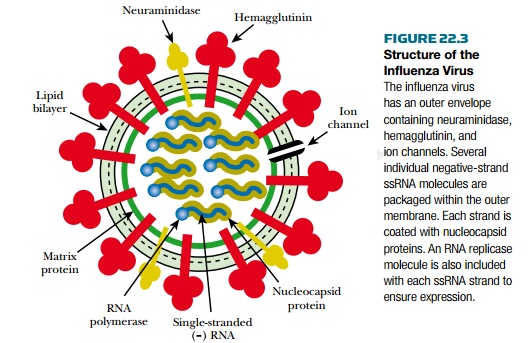
When a flu virus comes in contact with
an appropriate host cell it is engulfed and ends up inside a vesicle. Both the
vesicle and the outer coat of the virus particle are dissolved, releasing the
nucleocapsids, which enter the nucleus. The nucleocapsids disassemble inside the
nucleus releasing the RNA molecules ( Fig. 22.4 ). Replication of the influenza
RNA occurs in the nucleus. The viral mRNA exits the nucleus just like normal
cellular mRNA and travels to the ribosomes in the cytoplasm. Here the proteins
for the new virus particles are made.
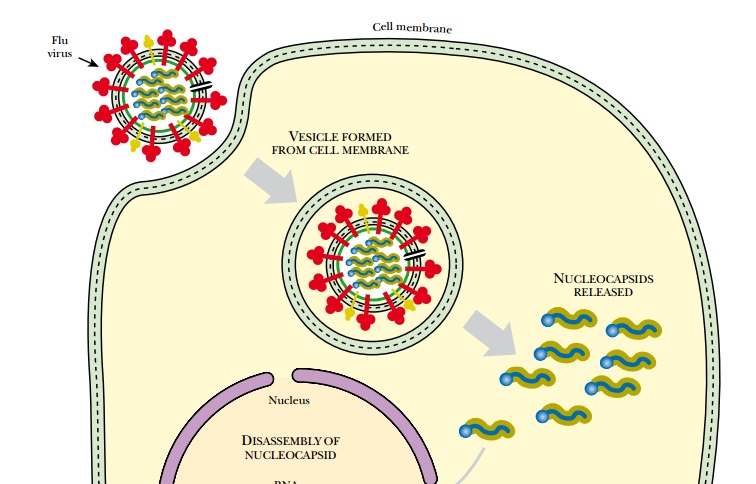
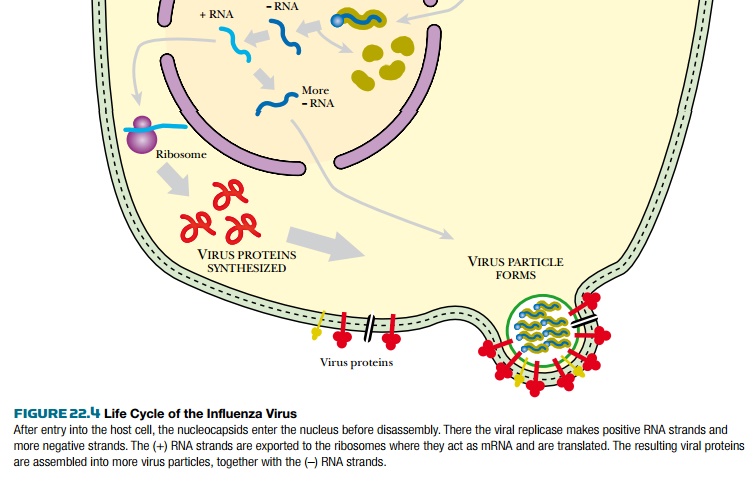
Because influenza virus has its genes
scattered over eight separate molecules of RNA, different strains of flu can
trade segments of RNA and form new genetic combinations ( Fig. 22.5 ). In
addition, mutations occur at a higher rate during RNA replication than in DNA.
These two mechanisms result in a lot of genetic diversity. Consequently,
different strains of flu emerge every couple of years. The changingsurface
antigens of the virus allow it to avoid immune recognition. These different flu
strains vary greatly in their apparent virulence. However, this depends as much
on the immune history of the human population as on genetic changes in the
virus.
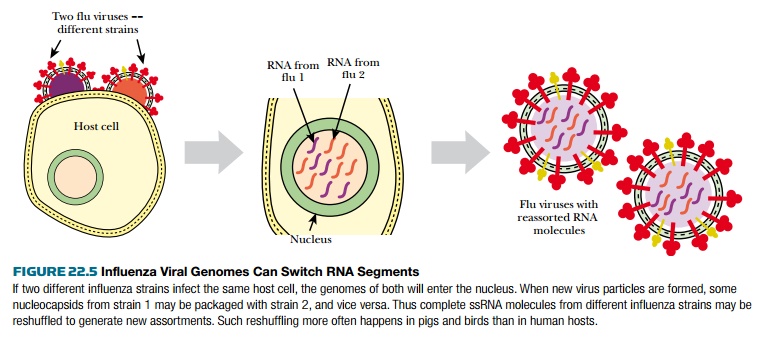
Influenza viruses fall into two major groups, influenza A and B. Mutation of both A and B causes annual epidemics due to slow antigenic drift. Influenza B is largely restricted to humans and has less genetic variation. Influenza A has a wider host range (“people, pigs, and poultry”). As a result, influenza A gives rise to severe but less common epidemics due to reassortment of viruses from different hosts during mixed infections. The Spanish flu of 1918–1919 was the worst influenza A pandemic so far and is estimated to have killed around 50 million people (more than World War I). Will there be another major flu pandemic soon? The World Health Organization is worried about the unusually virulent H5N1 avian flu emerging in Asia. So far a few humans have caught this from birds. The major threat is that this will mutate further and become readily transmissible from person to person. Amantadine is a tricyclic amine that binds to the M2 protein, one of the transmembrane ion channels found in the outer envelope of influenza A virus. M2 is not expressed by influenza B and consequently amantadine works only against type A strains of influenza. Amantadine blocks the M2 ion channel, and this stops entry of protons, which prevents uncoating of the virus particle ( Fig. 22.6 ). Thus entry of the virus is prevented. Amantadine must be given very early in infection. Amantadine was actually the first specific and effective antiviral agent to be discovered, although its mode of action has only recently been elucidated. Influenza (both A and B) may also be treated with neuraminidase inhibitors, such as oseltamivir (= Tamiflu) or zanamivir. These are analogs of N -acetylneuraminic acid. Neuraminidase normally cleaves this from the virus receptor, allowing progeny virus particles to be released. If neuraminidase is inhibited, progeny virus is trapped in infected cells.
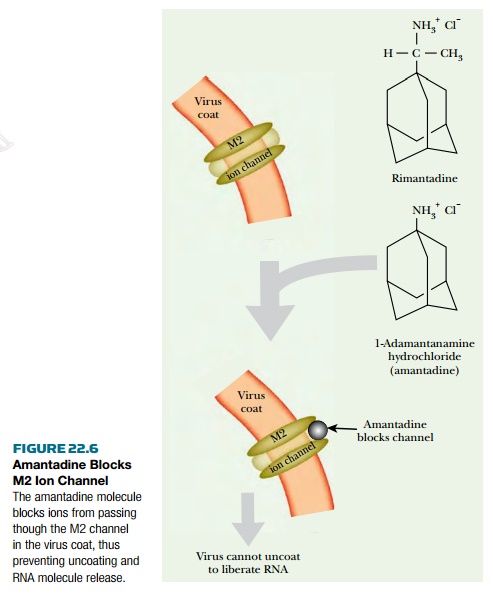
Related Topics